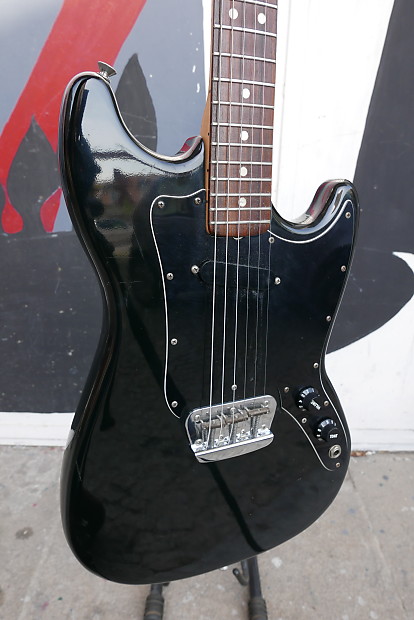

I made the pickguard using an old hacked up Musicmaster Bass pickguard as a pattern, though I later realized I could have bought one from WD Music Products pretty cheaply. Over the course of the 70s, the Japanese output improved dramatically, and in many ways these early 70s models are a low point for the brand. The neck was a straight-forward refret, using Fender's current 'medium' guitar fretwire as opposed to the 'jumbo' fretwire used on Fender's full-size basses from 1966 on. These new Epiphones were based on existing Matsumoku guitars, sharing body shapes, and hardware, but the Epiphone line was somewhat upgraded, with inlaid logos and a 2x2 peghead configuration. The Matsumoku factory had been producing guitars for export for some time, but the 1820 bass (alongside a number of guitar models and the 5120 electric acoustic bass) were the first Epiphone models to be made there. By 1976 Fender had a five-acre facility under one roof in Fullerton and. Having said this, there are a lot worse guitars out there, and as well as being historically important, the 1820 bass can certainly provide the goods when required.By the end of the 1960s, a decision had been made to move Epiphone guitar production from the USA (at the Kalamazoo plant where Gibson guitars were made), to Matsumoto in Japan, creating a line of guitars and basses significantly less expensive than the USA-built models (actually less than half the price). Fender Musicmaster 1976 Black 1,105 Used Good Add to Cart Fender Music master 1975 Dakota Red guitar 1,599.99 80 Off 1,519. A radically different design was the shortlived Performer (main guitar). Over the course of the 70s, the Japanese output improved dramatically, and in many ways these early 70s models are a low point for the brand.

Fender Musicmaster, 1956-1964ġ958 Fender Musicmaster Image Heritage auctionsīy the end of the 1960s, a decision had been made to move Epiphone guitar production from the USA (at the Kalamazoo plant where Gibson guitars were made), to Matsumoto in Japan, creating a line of guitars and basses significantly less expensive than the USA-built models (actually less than half the price). The Musicmaster was clearly a success, remaining in continuous production until 1982. As Fender put it in the 1976 catalog "Begin with a Musicmaster, and graduate to stardom!". This fact was demonstrated on the cover of the 1958 'Down Beat' brochure - an adult plays a Fender Stratocaster, whilst a child looks on, Fender Musicmaster in hand. But in truth, most experienced guitarists wanting to play widely spaced chords or the extra speed afforded by closer frets would chose the dual pickup Duo-Sonic - assuming price was not an issue!įender always believed that if beginner guitarists chose Fender, they would more likely continue playing Fender guitars as they got older. The 1950s Fender Musicmaster was described as three quarter size, but the difference in size was not so great: Fender also suggested these models for more established players with smaller hands. All guitars sold receive a 35-point inspection, ensuring an incredible playing experience.
#1976 fender musicmaster guitar professional#
Although these 'student' guitars were shorter scale than the Fender standard (22 1/2" vs 25"), they were not 'student' in terms of build quality - in fact very much in line with the Fender professional models such as the Telecaster and Stratocaster. Cream City Music is one of the world's finest guitar shops with selections including the Vintage 1976 Fender Musicmaster Electric Guitar Black Finish. It was joined shortly afterwards by a dual pickup companion model, the Duo-Sonic. The three-quarter size Fender Musicmaster debuted in 1956, as a new student model in the Fender solid body range.


 0 kommentar(er)
0 kommentar(er)
